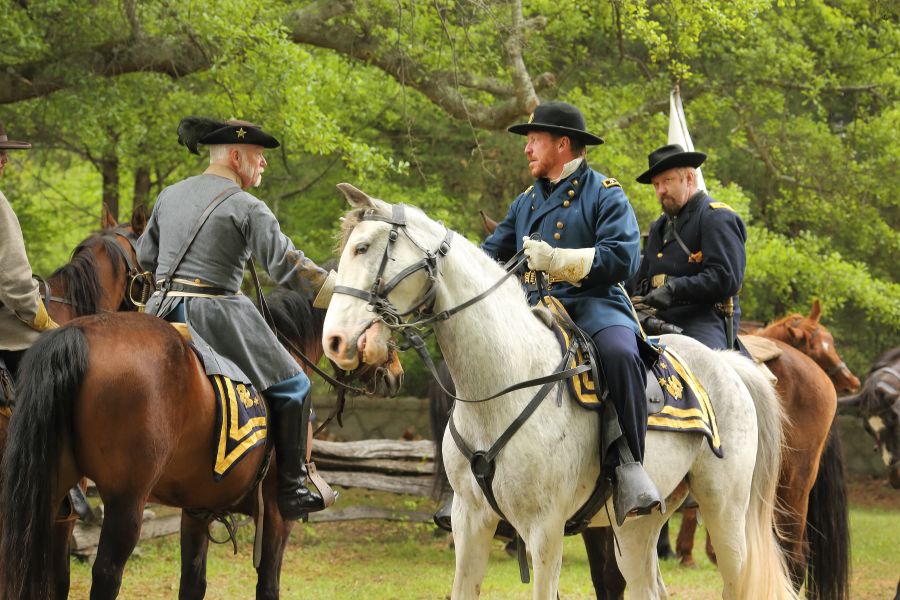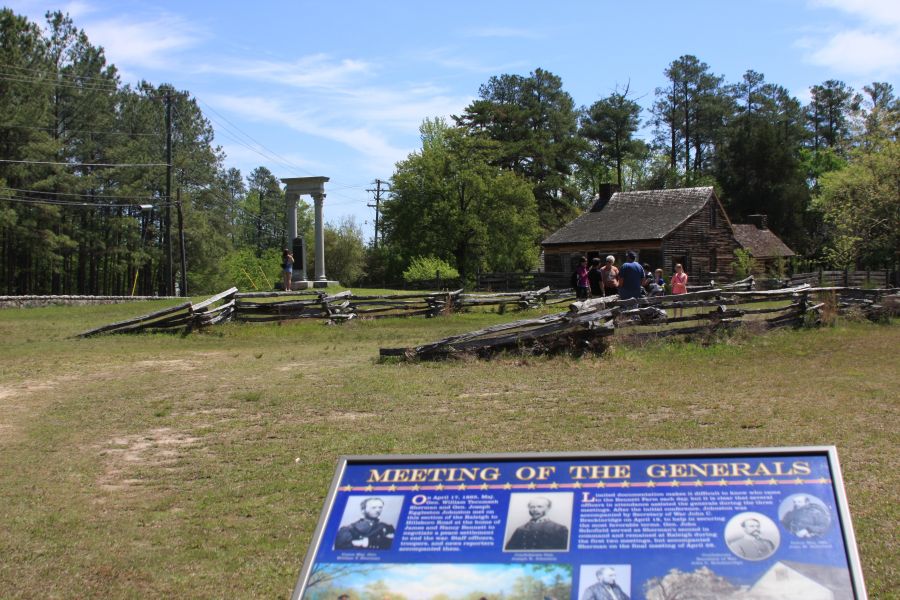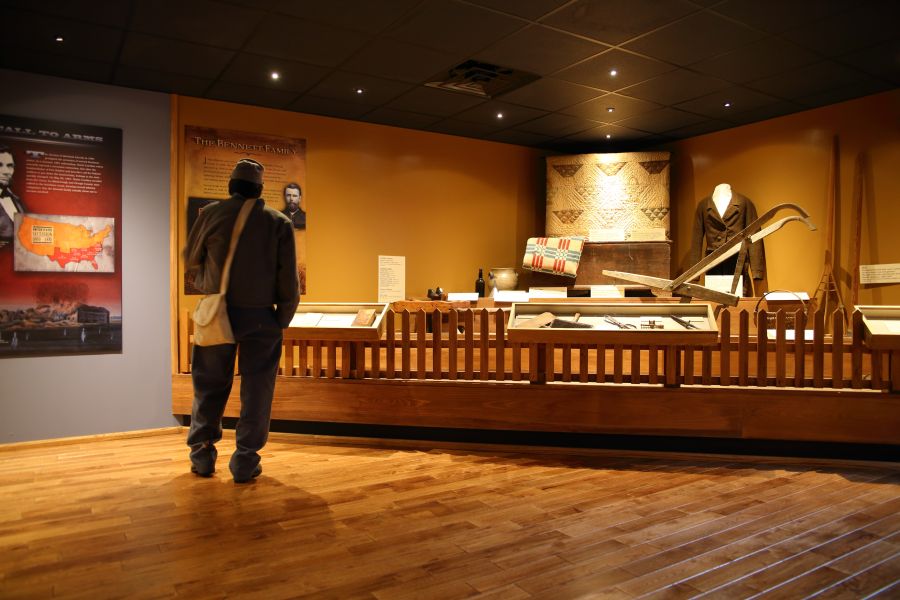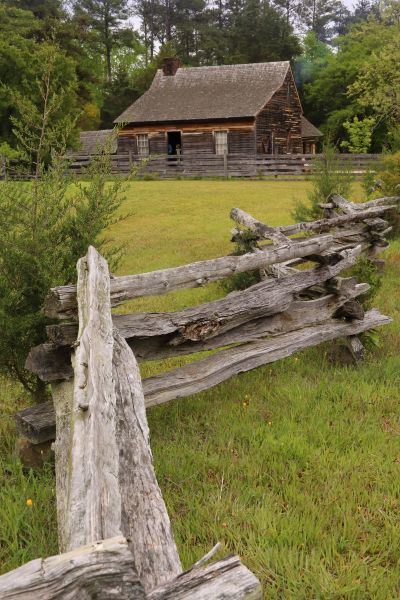Plan A Visit To State Historic Site: Bennett Place
Discover Bennett Place Historic Site, the location of the largest surrender of Confederate troops in the American Civil War
Posted By Ronny Maye on Jun 04, 2024
Several sites across the state have been preserved to tell the history of North Carolina and its role in American history. Durham County is home to three of those state historic sites, including Bennett Place. This site is worth visiting for travelers and residents interested in The American Civil War.

Bennett Place holds reenactments of the historic surrender for visitors to witness. Photo: Bill Russ / Discover Durham
Why is Bennett Place Significant to The American Civil War?
Slavery was a widespread and lucrative practice across the South in which many landowners enslaved Africans to perform free labor – tending to their farms, children and other odd jobs such as brick masonry, cobblers, distillers, tailors and dairy maids. Taking place over four years (1861-1865) between The Union (Northern states) and The Confederacy (Southern states), the American Civil War was a battle over the morality of slavery and states rights.
In April 1865, an ordinary homestead owned by James and Nancy Bennett was forever etched into history as the site of the largest Confederate troop (approximately 90,000) surrender of The Civil War. Union General William T. Sherman and Confederate General Joseph E. Johnston met, negotiated and agreed to surrender the Southern armies of North Carolina, South Carolina, Georgia and Florida. Other troop surrenders occurred in Citronelle, Alabama; New Orleans, Louisiana; and Appomattox, Virginia. These four troop surrenders brought an end to The American Civil War.

Learn about the largest surrender of Confederate troops at Bennett Place. Photo: Discover Durham
How This Historic Site Connects The American Civil War and African-American History
Amid the war, in 1863, President Abraham Lincoln issued the Emancipation Proclamation. This has been noted in history as the event that freed enslaved people in The United States. However, many enslavers failed to inform slaves of their freedom–mainly because the burden and tasks of labor would then fall on the owners themselves. Without enslaved people, production would slow or even halt, resulting in a detrimental loss for those who relied on agriculture and farming.
Although the end of the war reinforced the freedom of enslaved men, women and children, enslavers across the South still moved at their own pace. In fact, in Galveston, Texas, enslaved people were not made aware of their freedom until June 19, 1865…now commemorated as Juneteenth.
When I have visited other museums dedicated to various wars, one of the sections that I tend to seek out is the one that speaks on Colored Troops. It’s usually a small section, as it is at this site. Here, a display within the museum commemorates the 200,000 formerly enslaved and free people of color who enlisted in the Union army and navy to fight for their freedom. According to President Lincoln, as documented by the exhibit, these Colored Brigades ultimately helped save the Union. As you dig deeper into The American Civil War, there's a unique juxtaposition that the war was mainly about the states’ right to continue practicing slavery, yet, Black men were called to the line of duty, literally fighting (or dying) for their freedom and the freedom of their families.

Check out both the indoor and outdoor exhibits at Bennett Place. Photo: Bill Russ / Discover Durham
I noticed luminaries along the tour path during my visit to Bennett Place. These luminaries commemorate the enslaved people who finally gained freedom once the war ended. This is a way to center the individuals who were essentially the catalyst for The American Civil War. When so many historic sites seem to gloss over the tragedies within our nation’s history, this is a tremendous effort to bring awareness and honor to formerly enslaved people and their families. In North Carolina alone, over 330,000 men, women and children were enslaved at the time of The American Civil War.
Plan Your Visit to Bennett Place
As you can imagine, a farm and home from the 1800s have undergone reconstruction and restoration. Present day, the Bennett’s property has been restored into a living history museum. It appears the same way it did in 1865 when the Generals met to negotiate the terms of surrender.
We started our tour (there is a self-guided option) in the theater to watch a short film, “Dawn of Peace.” Our tour guide walked us through James and Nancy’s home, which has several rooms fully furnished to reflect the era, including the parlor where the Generals met to negotiate the terms of surrender. Other parts of the restored farm, like the Kitchen house, reflect daily life for the Bennetts and their three children.
I found the galleries inside the Visitor Center to be particularly intriguing. One of which went into more detail about The Bennett family. The Bennetts (also spelled Bennitt), moved onto 325 acres of farmland a year before the start of the war. Like many others in the area, they were focused on agriculture and other trades. Although slavery was common and they owned a lot of land, it has not been recorded that they were slave owners. On the tour, our guide explained how their home (halfway between The Union headquarters in Raleigh and the Confederate headquarters in Greensboro) became the site of surrender for a war about slave ownership.

See the house where the confederate troops surrendered at Bennett Place. Photo: Bill Russ / Discover Durham
The other galleries inside the Visitor Center display an extensive collection of period pieces relating to weapons, farming machinery and tools. There is also a large collection of documents and books about The American Civil War.
Over the years, I have heard and learned numerous details and facts about The Civil War. However, visiting Bennett Place was the first time I learned about North Carolina’s role in the war in such detail. Overall, it was a well-spent afternoon, and I encourage anyone wanting to learn more to stop by for a tour.
Plan Your Visit to Bennett Place
Location: 4409 Bennett Memorial Rd.
Hours: Tuesday – Saturday, 9 a.m. – 5 p.m.
Admission: Free, though donations are welcomed.
Guided Tours: Tuesday - Saturday, on the hour from 10 a.m. - 3 p.m.
Guided Tour Prices: Adults: $4 + tax, Seniors (65+) and military: $3 + tax, Youth (3-17): $1 + tax, K-12 groups: free
Accessibility: Bennett Place visitors center is wheelchair accessible. There is a 50-yard dirt pathway to the farm and there are steps to the doorway of the Bennett's house.
Learn More: For more information, including special events, educational programs and group tours, visit the official Bennett Place website.
